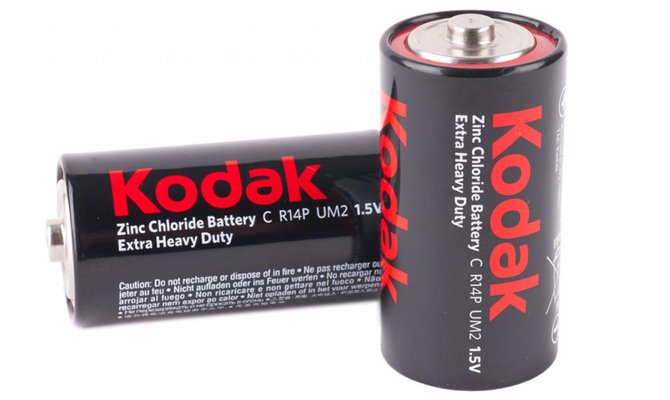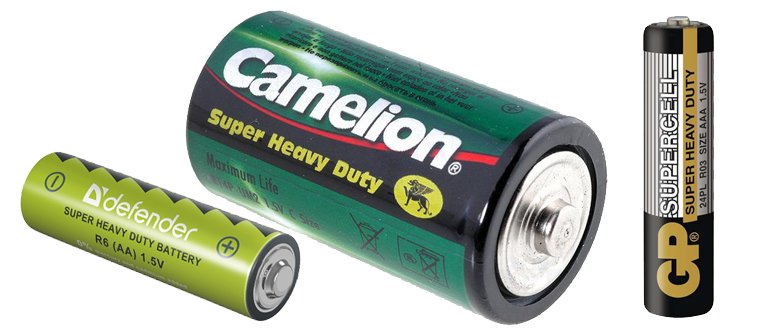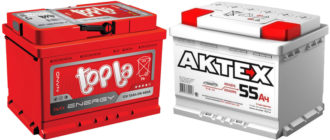Due to the abundance of battery-powered electrical devices, such products have become widespread among consumers. One of the most popular varieties of power supplies of this type is salt batteries.
Content
What is a salt battery
The battery consists of a group of electrical two-way strips that are connected in series or parallel. Despite the different meaning of the term, in everyday life, the word “battery” is fixed to single galvanic cells fixed in a single circuit.

As a rule, they are used to power various electrical appliances, which makes them portable, independent of a stationary power source. The first salt batteries, also called Leklanshe elements, were invented back in 1865.
Such products are ideally suited for use in devices that consume small to moderate amounts of energy. Their design is very simple, which makes the production process as cheap as possible. Such batteries belong to the “dry type”, to which, in addition to them, coal-zinc batteries are ranked (depending on the composition).
What is the difference between salt and alkaline batteries
Often, consumers compare salt and alkaline batteries, choosing the best option for themselves. From an economic point of view, salt batteries seem to be the most affordable option, since they are produced in large volumes, and their manufacture does not require impressive costs.
However, in comparison with more expensive alkaline elements, this is the only advantage. The latter have a much longer service life, which allows the devices to maintain a healthy state longer. In addition, they are less susceptible to voltage changes on the electrodes of the elements.

Since salt batteries lose their charge much faster than alkaline batteries, it is advisable to find out the shelf life of an element before acquiring it. If a lot of time has passed from the production date, the battery will not last long.
Varieties and sizes of salt batteries
Today, there are a huge number of varieties of salt batteries, due to their wide distribution. Each product size has its own designation, which may differ, depending on the selected classification.
Basic designations involve the use of letter designations, and classification according to the International Electrotechnical Commission involves the use of a combination of letters and numbers to identify an element. In addition to these standards, ANSI / NEDA, as well as GOST / TU, can be used for classification.
It is important to note that the basic designations do not provide for the reflection in the marking of the type of battery (alkaline, saline and others). Depending on the size, as a rule, the parameters of the elements also differ.

The most common standard sizes of salt batteries are considered:
- finger batteries - “AA”, also designated R. Their capacity is about 1100 mAh, and the dimensions are 14.5 * 50.5 mm;
- pinky batteries - “AAA”, also denoted by R Have a capacity of 540 mAh and dimensions of 10.5 * 44.5 mm;
- elements of type “C” are also indicated R14have a capacity of 3800 mAh and dimensions of 26.2 * 50mm;
- batteries "D", identified as R20 according to the IEC classification, they have a capacity of 8000 mAh.Similar products were created specifically for the power of lighting lamps. Further, they are used for portable tape recorders;
- R10 - the main designation and identifier in the IEC are the same. The capacity is 1800 mAh, and the dimensions are 21.5 * 37.3 mm. Used in Soviet times to power measuring instruments and children's toys. The sale was limited for some time, since such elements were considered strategically important.
Among other things, there are less common sizes for such batteries, such as R14250, R25, R23 and others. Regardless of size, they have common design features - a cylindrical shape, a protrusion at the end with a positive electrode and a flat surface with a negative charge on the other side.
Determining the size of the battery is extremely simple - just study the markings on it.
| Type of | Marking | Capacity mAh | Voltage | Dimensions, mm |
|---|---|---|---|---|
| A | R23 | 1.5 | 17*50 | |
| AA | R6 | 1100 | 1.5 | 14,5*50,5 |
| AAA | R03 | 540 | 1.5 | 10,5*44,5 |
| C | R14 | 3800 | 1.5 | 26,2*50 |
| D | R20 | 8000 | 1.5 | 34,2*61,5 |
| F | R25 | 6 | 33*91 | |
| 1 / 2AA | R14250 | 250 | 1.5 | 14,5*25 |
| R10 | R10 | 1800 | 1.5 | 21,5*37,3 |
Advantages and disadvantages of salt batteries
Being the most common type of power source, they have advantages and disadvantages. The main advantage is the low cost of raw materials for production and, accordingly, the products themselves.
In addition, the manufacturing process of such elements is extremely simple, and the final parameters of the batteries make them an acceptable option for use in most household appliances. Nevertheless, a number of manufacturers are reducing the output of salt elements, which is due to an impressive list of disadvantages. It includes:
- during the discharge there is a sharp decrease in voltage;
- low capacity that does not allow the use of products in high-power devices;
- decrease in technical characteristics when working at low temperatures;
- short shelf life.
It is important to take into account that the final parameters of the salt elements are very dependent on temperature and the mode of use, which is why the characteristics of the batteries given by the manufacturer should be taken as indicative.

Can salt batteries be charged?
Only batteries can be charged, and salt batteries are not. On the Internet, you can find several ways to restore capacity. However, their further service life was extremely small, which indicates the impossibility of a full charge of this type of battery.
It is not recommended to charge such batteries on their own, as the user exposes himself and the device used to great danger, which is associated with overheating of products and a high probability of leakage.
Thus, salt products are a simple and affordable source of energy for devices with a low level of its consumption. Charging them is impractical, since acquiring a new element is much easier and cheaper than putting the device at risk.
Still have questions aboutsalt batteries or have something to add? Then write to us about it in the comments, this will make the material more complete and accurate.





